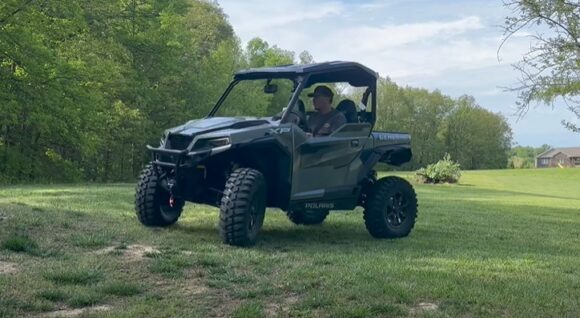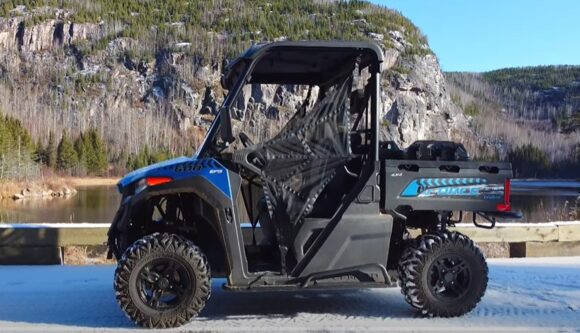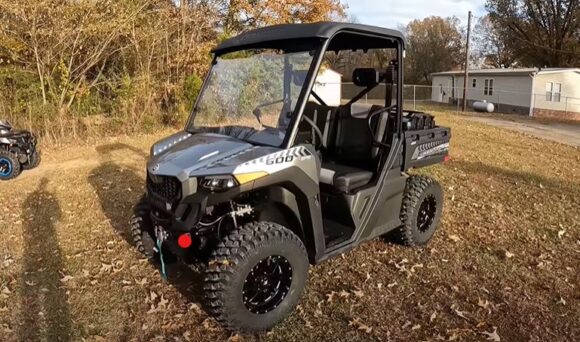The Polaris General is a powerful UTV for work or recreation. It can handle off-road tracks and hefty loads because of its sturdy design. Despite its strength and durability, it is still susceptible to some issues and can suffer from various problems.
The most common Polaris general Problems include:
- Overheating
- Transmission problems
- Engine problem
- Power steering failure
Besides the mentioned reasons, there are various other potential causes behind Polaris General’s problems.
Continue reading to find out more about the many reasons for this problem and how to solve them.
Polaris General Problems
Immediately inspect the following problem areas to identify the exact issue:

1. Overheating
The Polaris General is prone to overheating problems due to the clogging of the tiny slots in the radiator, which allow the radiator to release heat and provide cooled coolant to the engine.
Without the fans running, the coolant level drops and the normal operating temperature can rise beyond 200°F, leading to an overheating engine.
This is also usually caused by mud, debris, grass, and weeds that accumulate around the radiator and engine exterior.
The fix
To prevent overheating, it is important to regularly check the coolant and radiator levels and to keep the radiator fins clean and free of any obstructions.
Also, installing an aftermarket cooling system can further reduce temperatures and ensure optimal performance.
2. Transmission problems
The Polaris General is a powerful machine that can take you anywhere you need to go, but it can also come with some common transmission problems.
This problem occurs due to the reverse chain, which can snap when it’s strained too much.
Other transmission problems can arise due to wear and tear on the belt, drive clutch defects, misalignment, or cheap parts.
The fix
To cope with this issue, you can upgrade to a double reverse chain, giving you nearly twice the strength of the stock chain.
Make sure to regularly maintain your vehicle, drive it responsibly, and avoid extreme use or abuse.
3. Power steering failure
The most common cause of power steering failure in a Polaris General is a malfunctioning power steering pump.
This can be due to a variety of things, including a worn seal, a clogged filter, or an electrical issue.
Other common causes of your Polaris General’s inability to start are a faulty spark plug, a weak fuel pump, a filthy fuel sock, or a defective brake sensor.
The fix
To fix the steering failure problem you should maintain the following steps:
- Locate and inspect the power steering pump
- Replace the pump if it’s damaged.
- The seal should be checked for wear and replaced if needed
- Clogged filters should be checked and replaced.
- Check for loose wires and rust in the electrical connections.
The power steering should be tested after these steps.
If the power steering is still not functioning correctly, the issue may be more serious and require further investigation.
4. Engine problem
When the master cylinder pressure valve is faulty, it can lead to a variety of engine issues.
It also includes difficult starts, misfires, backfires, engine idling without powering up, engine running without idling, and loss of power.
The fix
Follow these instruction step by step:
- Check the spark plug first. If broken, replace it.
- If the spark plug is good, check the gas tank, fuel and air filters, fuel system, and engine compression.
If you see water in the gas tank, a clogged fuel line, a broken fuel pump, or poor engine compression, take your Polaris to a mechanic.
The mechanic can fix your car by replacing the master cylinder pressure switch. Fix this component immediately to ensure safety.
5. Starting issue
A bad spark plug is a common starting issue. These plugs wear out and fail to spark the engine.
Weak fuel pumps are another possibility. Fuel for ignition can be lost due to pump failure or filter sock dirtiness. Clogged air filters can block oxygen for combustion, making starting harder.
A defective brake sensor is another possibility. If this device doesn’t work, your Polaris won’t start.
The fix
To fix the starting issues:
- Start with the spark plug. During periods it wears down and loses its ability to spark the engine. So, replace the spark plugs.
- Next, check the fuel pump since it can deteriorate or its sock can get dirty, preventing it from supplying enough gasoline for ignition. Replace the fuel pump if needed.
- Clean air filters supply proper oxygen, preventing hard start. Replace the bad brake sensor.
- This gadget detects whether your foot is on the brake before starting, so if it’s broken, your Polaris won’t start. Change it as soon as possible.
6. Clutch problem
Over time, the clutch components in a Polaris General can become worn, dirty, or even misaligned, leading to issues with engagement.
This can cause the drive belt to slip, resulting in jerky starts, reduced power, and even damage to the clutch components.
The fix
To ensure optimal performance, it is important to clean and inspect the clutch components on a regular basis and to adjust the tension on the drive belt to the manufacturer’s specifications.
Also, if the clutch is not properly adjusted, it can lead to slipping and other problems, so it is important to ensure the clutch is properly adjusted according to the manufacturer’s instructions.
7. Belt damage
Polaris General UTV drivers frequently experience belt damage. This causes engine noise and diminished performance.
Hot and cold weather can wear out the belt, making it more susceptible to break or damage.
Without proper maintenance, the belts can ruin too. Many drivers don’t realize that replacing and maintaining their vehicle’s belts can prevent future damage and expensive repairs.
The fix
Due to severe heat and strain, the belt must stay flexible and robust to control engine speed and power production.
Polaris General UTV belt damage can be prevented:
- First, regularly check the belt for wear.
- Replace the belt immediately if the damage is detected.
- Also, follow UTV maintenance guidelines.
Take steps to maintain your Polaris General UTV belt and maximize its performance.
8. Turf mode problem
Unfortunately, many General owners have experienced an issue referred to as the Turf Mode Problem, which can cause a clunking sound from the passenger side as well as a feeling of looseness on that side.
The cause of this problem is typically a failed inner CV joint, which can give the illusion of proper function during the manual inspection.
The fix
Fortunately, Polaris addressed this issue in 2019 and newer models, so if you are the owner of an older model, it could very well be the turf mode problem.
If you experience the symptoms associated with this issue, then replacing the CV joint should be enough to fix it.
How Good is Polaris General?
The Polaris General has incredible speed and power. It can effortlessly navigate the most challenging terrains. The Polaris General can overcome any barrier with its powerful engine and four-wheel drive.
Trails, bad weather, and goods transit are covered by Polaris General. The vehicle’s high-quality build and four-wheel drive technology make it reliable in any condition.
Due to its extra storage space, it’s a great solution for transporting stuff. The Polaris General is adaptable because it offers enough storage for equipment and groceries.
The Polaris General is a versatile UTV that many people like. Its comfort, power, and versatility allow it to handle any terrain.
Polaris Trailblazer 250 Problems
Polaris Sportsman 550 Problems
Sources:
Polaris General Starting Problem
Polaris General Oil Level Issue


